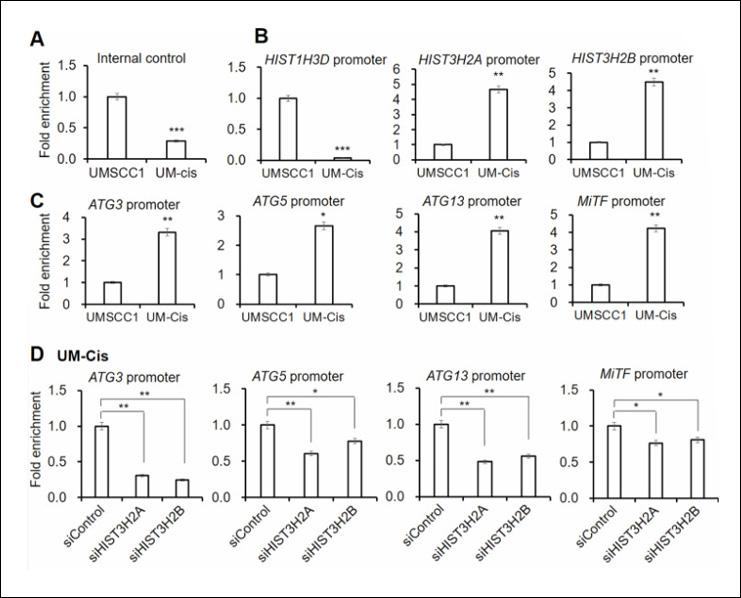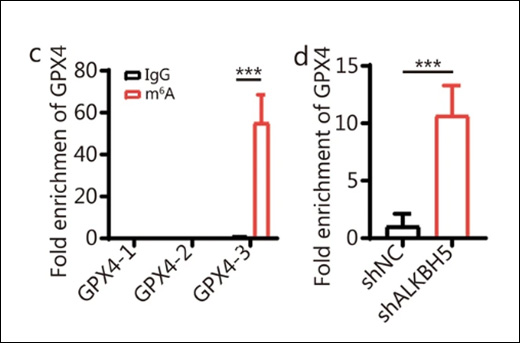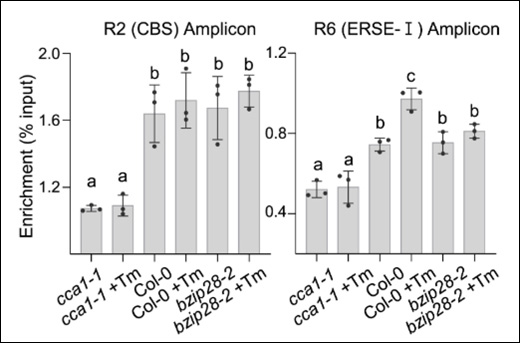Haider N et. al. (November 2023). Interactions between insulin resistance, epigenetics, and donor sex in gene expression regulation of iPSC-derived myoblasts J Clin Invest.
This study investigated how insulin resistance and sex hormones affect gene expression in muscle cells. They found over 500 genes with altered expression in insulin-resistant individuals, potentially linked to type 2 diabetes. Additionally, sex-specific differences in gene expression suggest a role for sex hormones and DNA methylation. These findings highlight the complex interplay between these factors, warranting further research.
Products Used: MethylFlash Global DNA Methylation (5-mC) ELISA Easy Kit (Colorimetric)
Wu D et. al. (November 2023). Genome-Wide 5-Formylcytosine Redistribution in KCl-Stimulated Mouse Primary Cortical Neurons is Associated with Neuronal Activity ACS Chem Neurosci.
This article explores the genome-wide distribution and potential functions of 5-formylcytosine (5fC) in neurons, revealing its dynamic increase upon neuronal activity and enrichment in promoter regions associated with neuro-related genes. Through multiomics analysis, the study identifies potential reader proteins for 5fC, suggesting its involvement in regulating gene expression and neuronal activity.
Products Used: MethylFlash 5-Formylcytosine (5-fC) DNA Quantification Kit (Colorimetric)
Albekairi NA et. al. (November 2023). Dapagliflozin Mitigated Elevated Disomic and Diploid Sperm in a Mouse Model of Diabetes and Recover the Disrupted Ogg1, Parp1, and P53 Gene Expression Biomedicines. 11(11)
This study investigates the impact of diabetes on numerical chromosomal aberrations (aneuploidy) in male reproduction, a topic not previously explored. The findings reveal that diabetes increases the frequency of aneuploidy in sperm, while treatment with dapagliflozin, a drug commonly used for diabetes, mitigates elevated levels of disomic and diploid sperm, suggesting a potential therapeutic approach to reduce diabetes-induced chromosomal defects in offspring.
Products Used: FitAmp Blood and Cultured Cell DNA Extraction Kit
Yu L et. al. (November 2023). The SMYD3-dependent H3K4me3 status of IGF2 intensifies local Th2 differentiation in CRSwNP via positive feedback Cell Commun Signal. 21(1):345.
The study links elevated SMYD3-mediated H3K4me3 levels in nasal epithelial cells of CRSwNP patients to increased Th2 cell differentiation. This is driven by heightened S-adenosyl-L-methionine (SAM) production under Th2-biased conditions. H3K4me3 enrichment at the IGF2 gene promoter enhances its expression, promoting Th2 cell differentiation. A positive feedback loop involving c-Myc/MAT2A sustains SAM production and maintains the Th2-skewed inflammatory response. Targeting SMYD3-mediated H3K4me3 and the c-Myc/MAT2A axis may offer therapeutic strategies for CRSwNP.
Products Used: EpiQuik Total Histone Extraction Kit, EpiQuik Histone H3 Modification Multiplex Assay Kit (Colorimetric)
Barish S et. al. (December 2023). The H2Bub1-deposition complex is required for human and mouse cardiogenesis Development. 150(23)
The study investigates the impact of de novo variants affecting histone H2B monoubiquitylation (H2Bub1) on human congenital heart disease, focusing the crucial role of the H2Bub1-deposition complex (RNF20-RNF40-UBE2B) in mouse cardiogenesis and the differentiation of human iPSCs into cardiomyocytes. The findings demonstrate that Rnf20 deletion in mice leads to embryonic lethality and abnormal myocardium, while the analysis of H2Bub1 marks during human iPSC differentiation underscores its significance in regulating tissue-specific gene expression and ensuring the production of full-length transcripts in cardiomyocytes.
Products Used: EpiQuik Total Histone Extraction Kit
Sita G et. al. (November 2023). The Unfolded Protein Response in a Murine Model of Alzheimer's Disease: Looking for Predictors Int J Mol Sci. 24(22)
This article delves into the connection between Alzheimer's disease (AD) and the Unfolded Protein Response (UPR) in a murine model using Aβ1-42 oligomer injection. Aging exacerbates endoplasmic reticulum (ER) dysfunction due to Aβ and Tau accumulation, leading to UPR activation. The study reveals memory impairment, oxidative stress, and glutathione depletion, with significant dysregulation of UPR pathways, emphasizing potential therapeutic targets like Mapkapk5 in the PI3K/Akt/Gsk3β and MAPK/ERK pathways for countering AD-related neurodegeneration.
Products Used: MAPKAPK5 Polyclonal Antibody
Zeng W et. al. (November 2023). Caveolin-1 deficiency alleviates palmitate-induced intracellular lipid accumulation and inflammation in pancreatic β cells J Physiol Biochem.
This article investigates the impact of Caveolin-1 deficiency on palmitate-induced intracellular lipid accumulation and inflammation in pancreatic β cells. The study demonstrates that Caveolin-1 deficiency alleviates these effects, suggesting a potential therapeutic avenue for addressing lipid-related stress in pancreatic β cells.
Products Used: EpiQuik Nuclear Extraction Kit
Sendera A et. al. (November 2023). Electromagnetic field (50 Hz) enhance metabolic potential and induce adaptive/reprogramming response mediated by the increase of N6-methyladenosine RNA methylation in adipose-derived mesenchymal stem cells in vitro Toxicol In Vitro. 95:105743.
This study explores the impact of a 50 Hz electromagnetic field (EMF) on adipose-derived mesenchymal stem cells (ASCs) and their potential for regenerative medicine. After 24 hours of exposure, the EMF significantly increased N6-methyladenosine (m6A) RNA methylation, indicating epitranscriptomic changes, and upregulated stem cell markers. Additionally, alterations in cell membrane flexibility, metabolic potential, and mitochondrial characteristics were observed, suggesting that ASCs undergo mobilization and adaptation under EMF influence, potentially redefining their stem cell fate and reprogramming decisions during differentiation.
Products Used: EpiQuik m6A RNA Methylation Quantification Kit (Colorimetric)
Zhang C et. al. (December 2023). mTORC1 Mediates Biphasic Mechano-Response to Orchestrate Adhesion-Dependent Cell Growth and Anoikis Resistance Adv Sci (Weinh). :e2307206.
This study investigates the dual mechanobiological response of tumor cells to extracellular matrix (ECM) stiffening and detachment. The research identifies an integrin-GSK3β-FTO-mTOR axis that enables cells to adapt to substrate stiffness, promoting growth advantages, and resist anoikis under matrix detachment, revealing potential double-hit targets for cancer therapy.
Products Used: EpiQuik m6A RNA Methylation Quantification Kit (Colorimetric)
Nie Q et. al. (December 2023). RNA N6-methyladenosine-modified-binding protein YTHDF1 promotes prostate cancer progression by regulating androgen function-related gene TRIM68 Eur J Med Res. 28(1):552.
The article investigates the role of RNA N6-methyladenosine (m6A) modification in prostate cancer (PC) pathogenesis, specifically focusing on androgen receptor (AR)-related genes. The research reveals that YTHDF1, an m6A-modified-binding protein, promotes PC progression by regulating the androgen function-related gene TRIM68, providing insights into the mechanistic interplay between m6A modification and AR-related genes in PC.
Products Used: EpiQuik m6A RNA Methylation Quantification Kit (Colorimetric)
Kou R et. al. (December 2023). Exosome-shuttled FTO from BM-MSCs contributes to cancer malignancy and chemoresistance in acute myeloid leukemia by inducing m6A-demethylation: A nano-based investigation Environ Res. :117783.
This study explores the role of bone marrow mesenchymal stem cells (BM-MSCs)-derived exosome-shuttled fat mass and obesity-associated protein (FTO) in acute myeloid leukemia (AML) progression and chemoresistance. The research reveals that FTO-containing exosomes from BM-MSCs contribute to AML malignancy by demethylating m6A modifications in the long non-coding RNA GLCC1, enhancing its stability and expression, and subsequently activating the GLCC1-IGF2BP1-c-Myc signaling pathway, providing potential biomarkers for AML diagnosis and therapeutic interventions.
Products Used: EpiQuik m6A RNA Methylation Quantification Kit (Colorimetric)
Li Y et. al. (December 2023). Autophagy activation is required for N6-methyladenosine modification to regulate ferroptosis in hepatocellular carcinoma Redox Biol. 69:102971.
This study investigates the regulatory influence of m6A modification on ferroptosis in hepatocellular carcinoma (HCC). The research reveals a significant correlation between ferroptosis and elevated m6A modification, particularly in ATG5 mRNA, mediated by the reading protein YTHDC2 and dependent on the m6A methyltransferase WTAP. Inhibition of WTAP or YTHDC2 effectively prevents ferroptosis and suppresses HCC development, suggesting potential therapeutic strategies for HCC treatment.
Products Used: EpiQuik m6A RNA Methylation Quantification Kit (Colorimetric)
Liu C et. al. (December 2023). ALKBH5 protects against stroke by reducing endoplasmic reticulum stress-dependent inflammation injury via the STAT5/PERK/EIF2α/CHOP signaling pathway in an m6A-YTHDF1-dependent manner Exp Neurol. :114629.
This article explores the role of ALKBH5 in mitigating endoplasmic reticulum (ER) stress-related neuroinflammation and neuronal apoptosis during ischemic stroke. ALKBH5, upregulated in ischemic stroke models, inhibits STAT5 mRNA stability and expression in an m6A-YTHDF1-dependent manner, thereby suppressing the PERK/eIF2/CHOP signaling pathway and alleviating ER stress-induced neuroinflammation and apoptosis.
Products Used: EpiQuik m6A RNA Methylation Quantification Kit (Colorimetric)
Hao S et. al. (November 2023). METTL3-mediated m6A modification of lnc KCNQ1OT1 promotes doxorubicin resistance in breast cancer by regulating miR-103a-3p/MDR1 axis Curr Issues Mol Biol. 45(11):8852-8863.
This study explores the role of METTL3-mediated m6A modification of the long non-coding RNA KCNQ1OT1 in promoting doxorubicin (DOX) resistance in breast cancer (BC) by regulating the miR-103a-3p/MDR1 axis. The findings reveal that lnc KCNQ1OT1, modulated by METTL3 through m6A modification, enhances DOX resistance in BC by inhibiting the miR-103a-3p/MDR1 axis, suggesting potential strategies to overcome DOX resistance in BC.
Products Used: EpiQuik CUT&RUN m6A RNA Enrichment (MeRIP) Kit




 Cart (0)
Cart (0)













